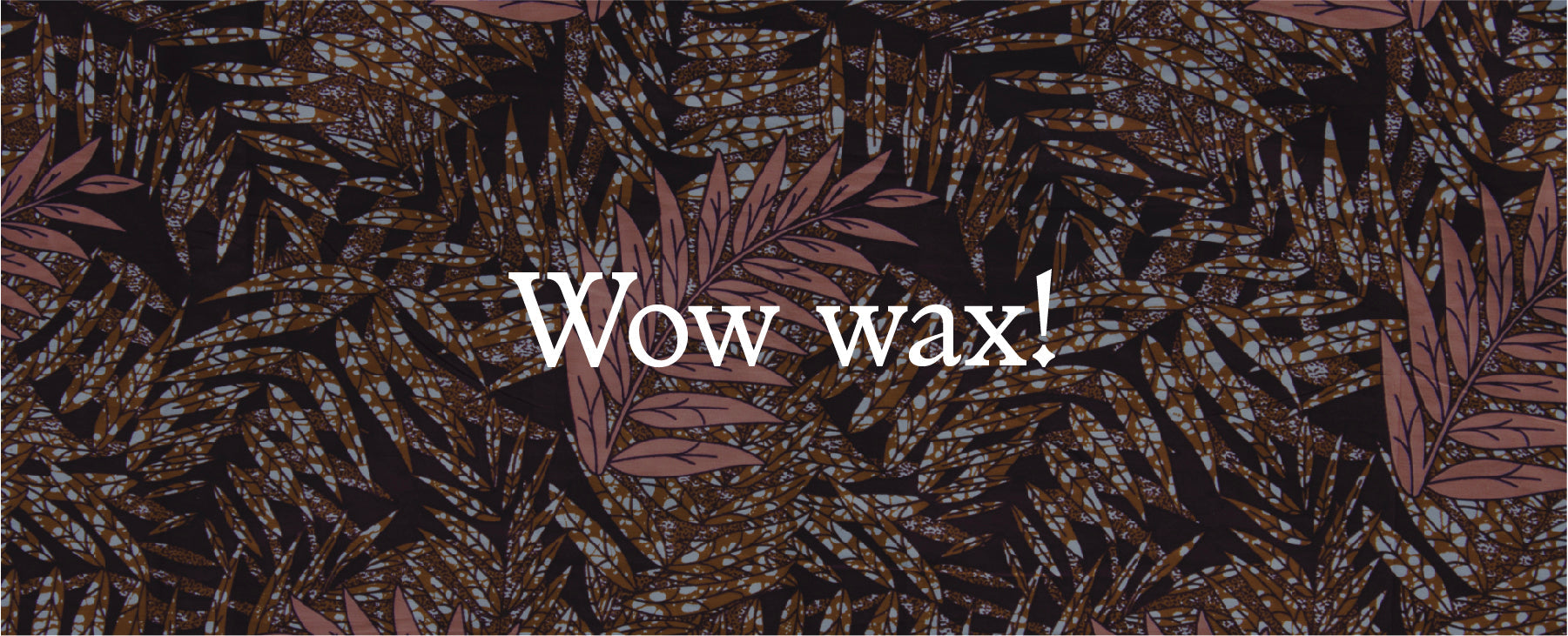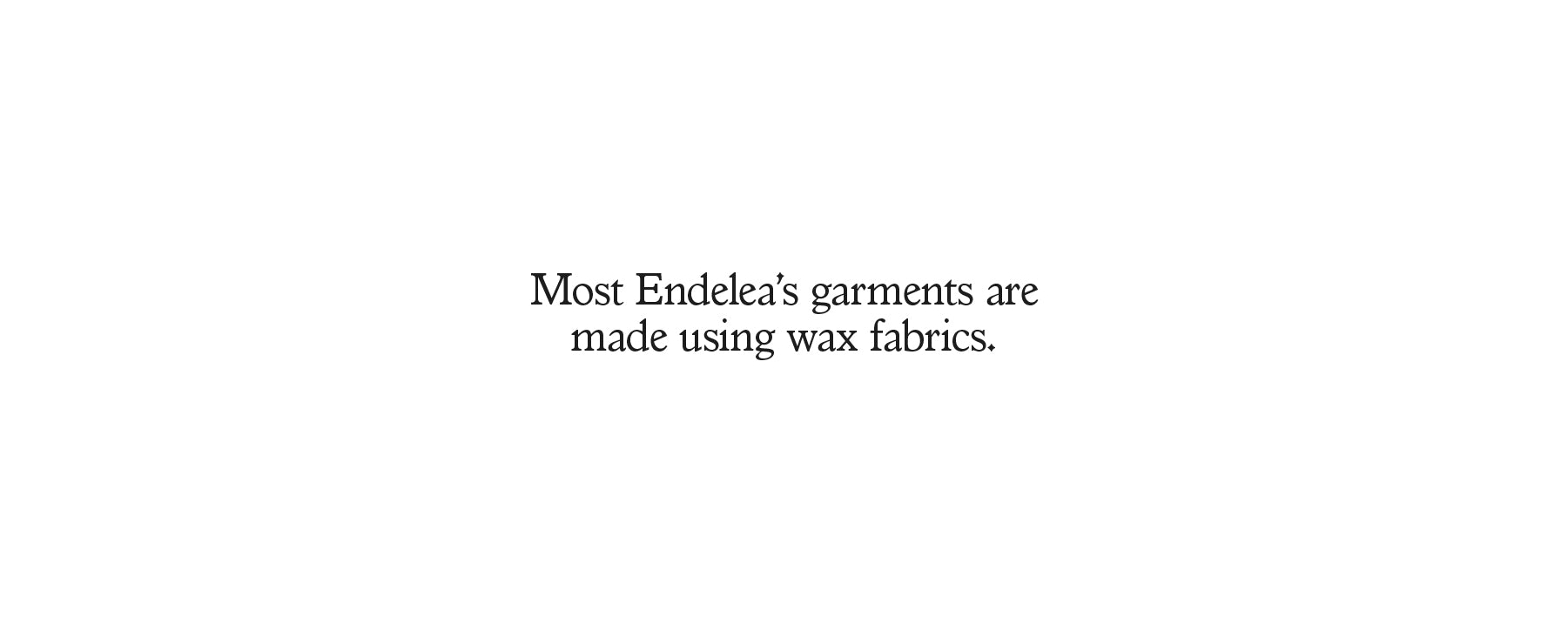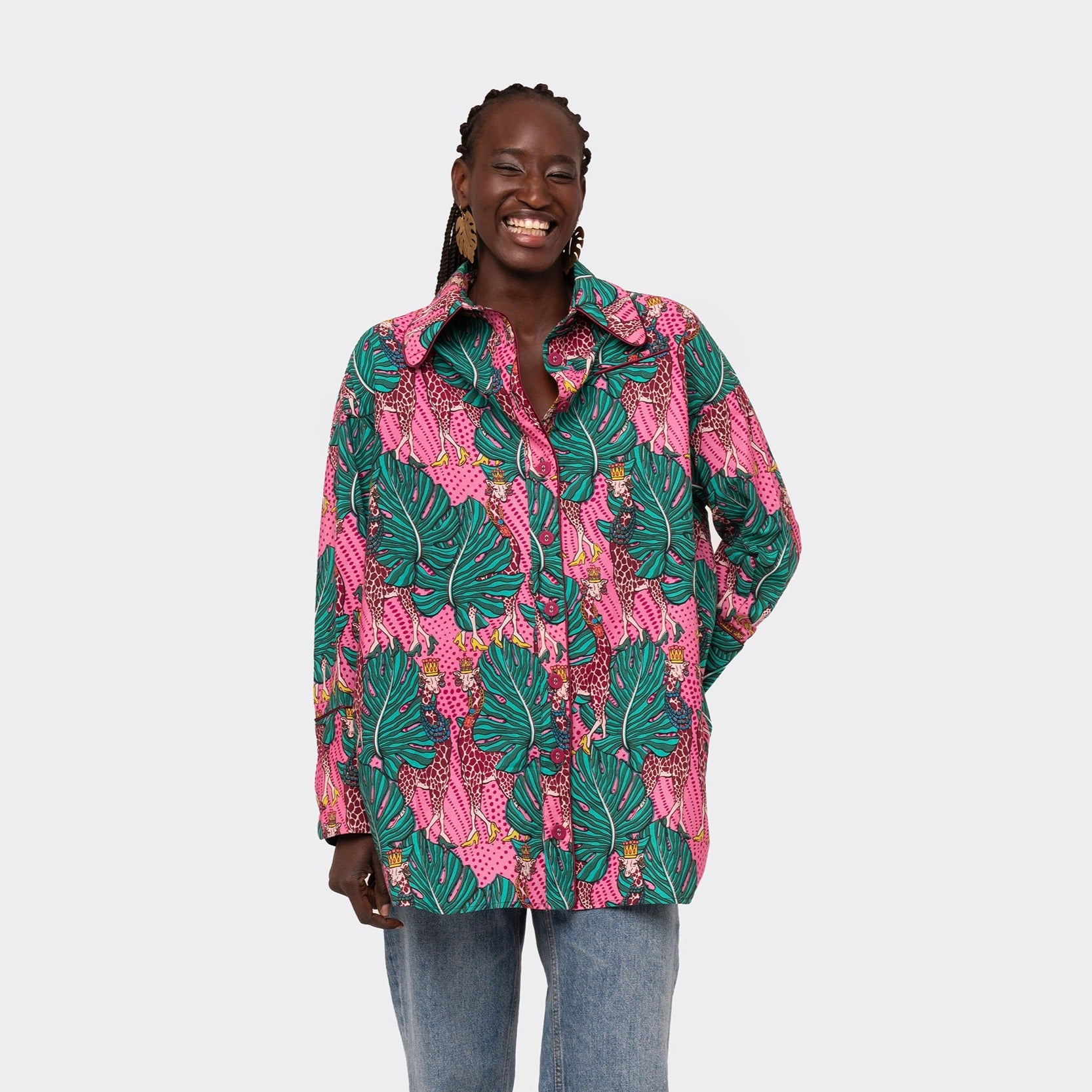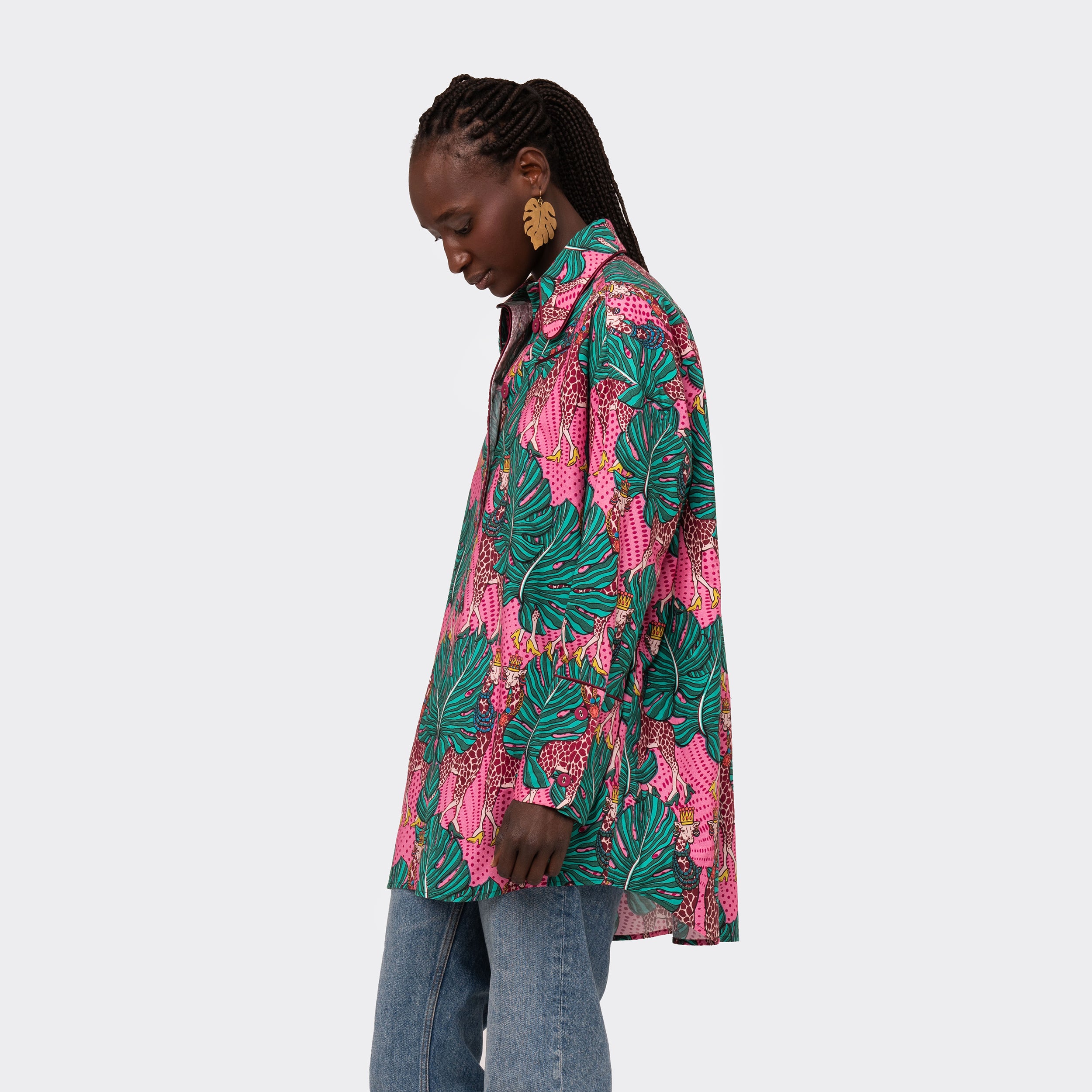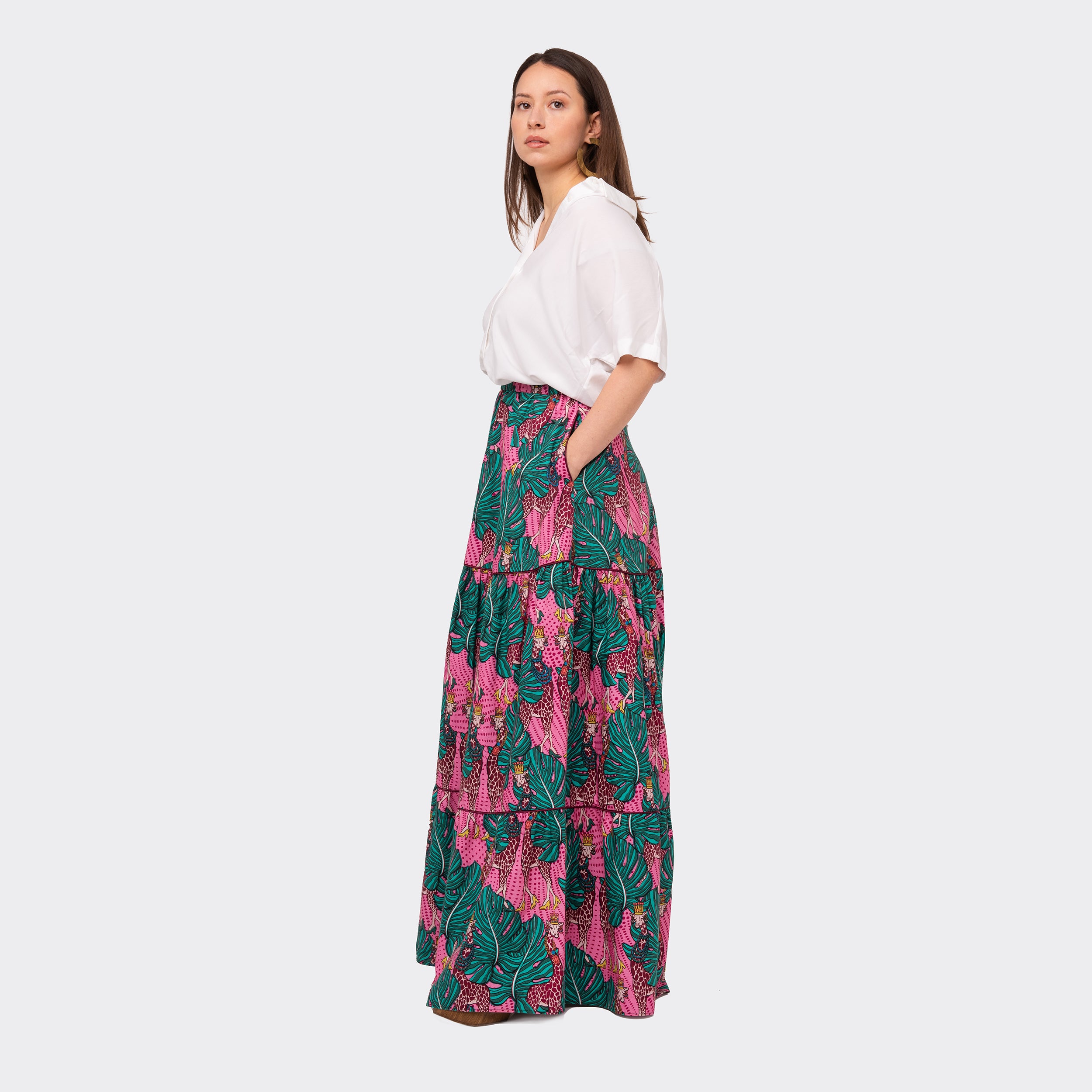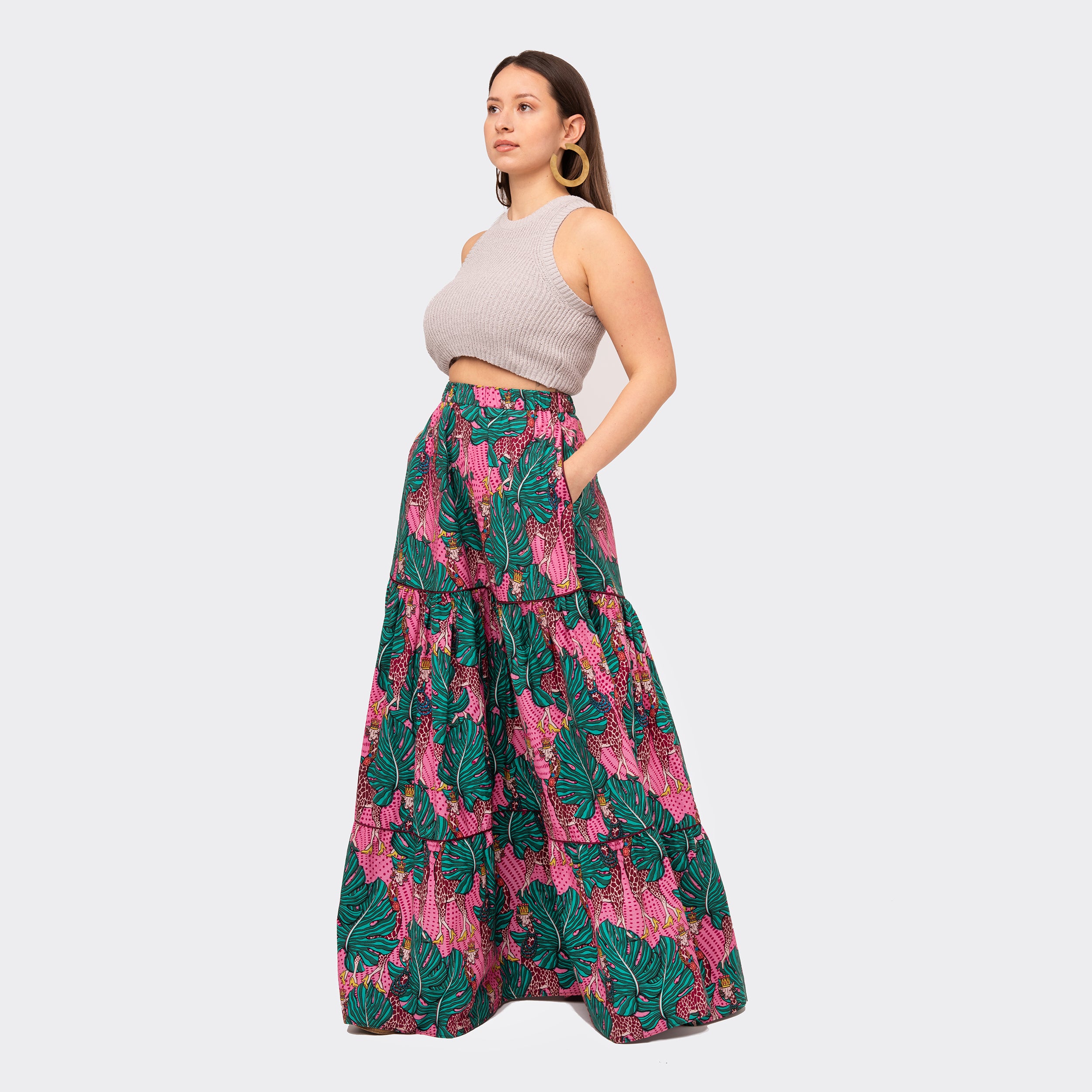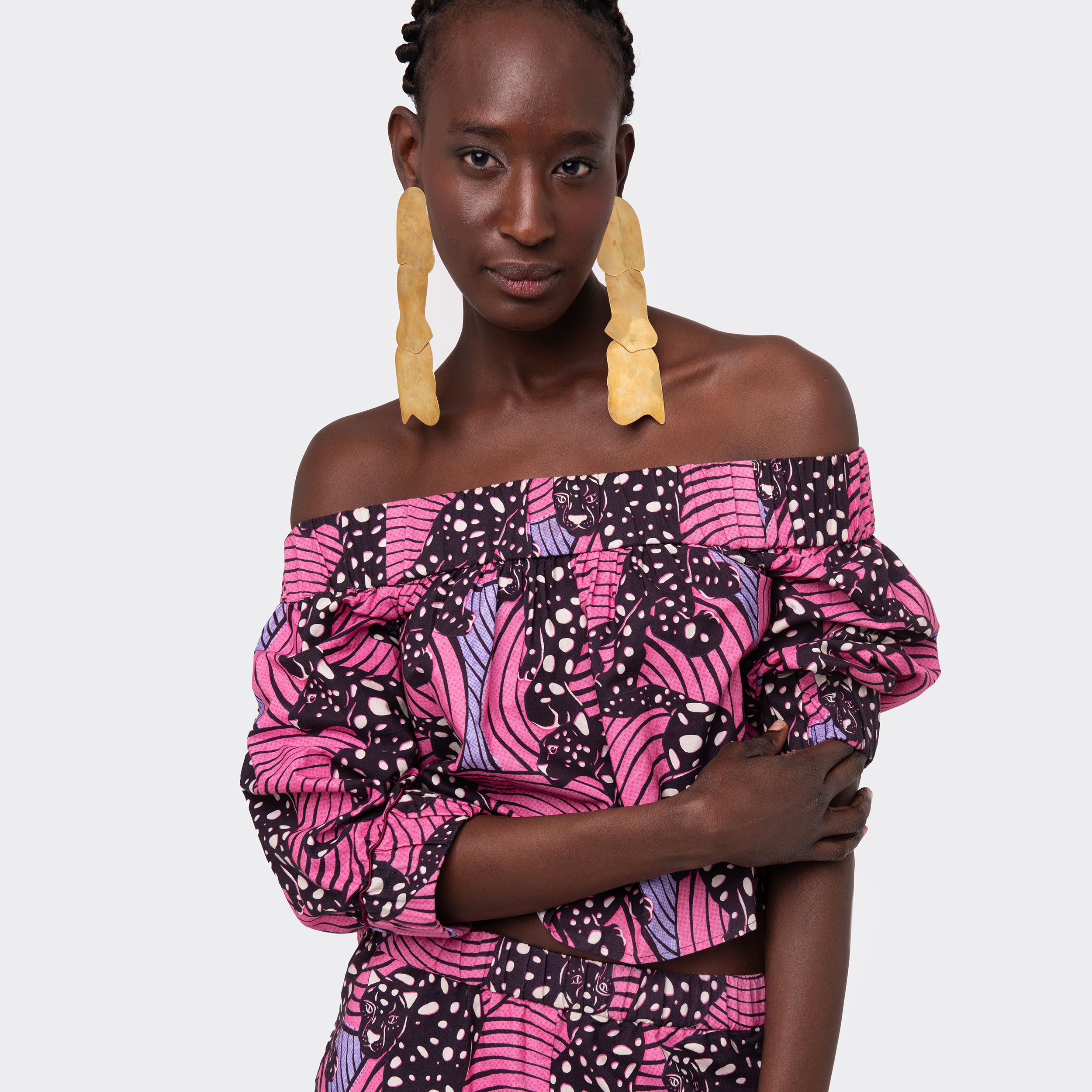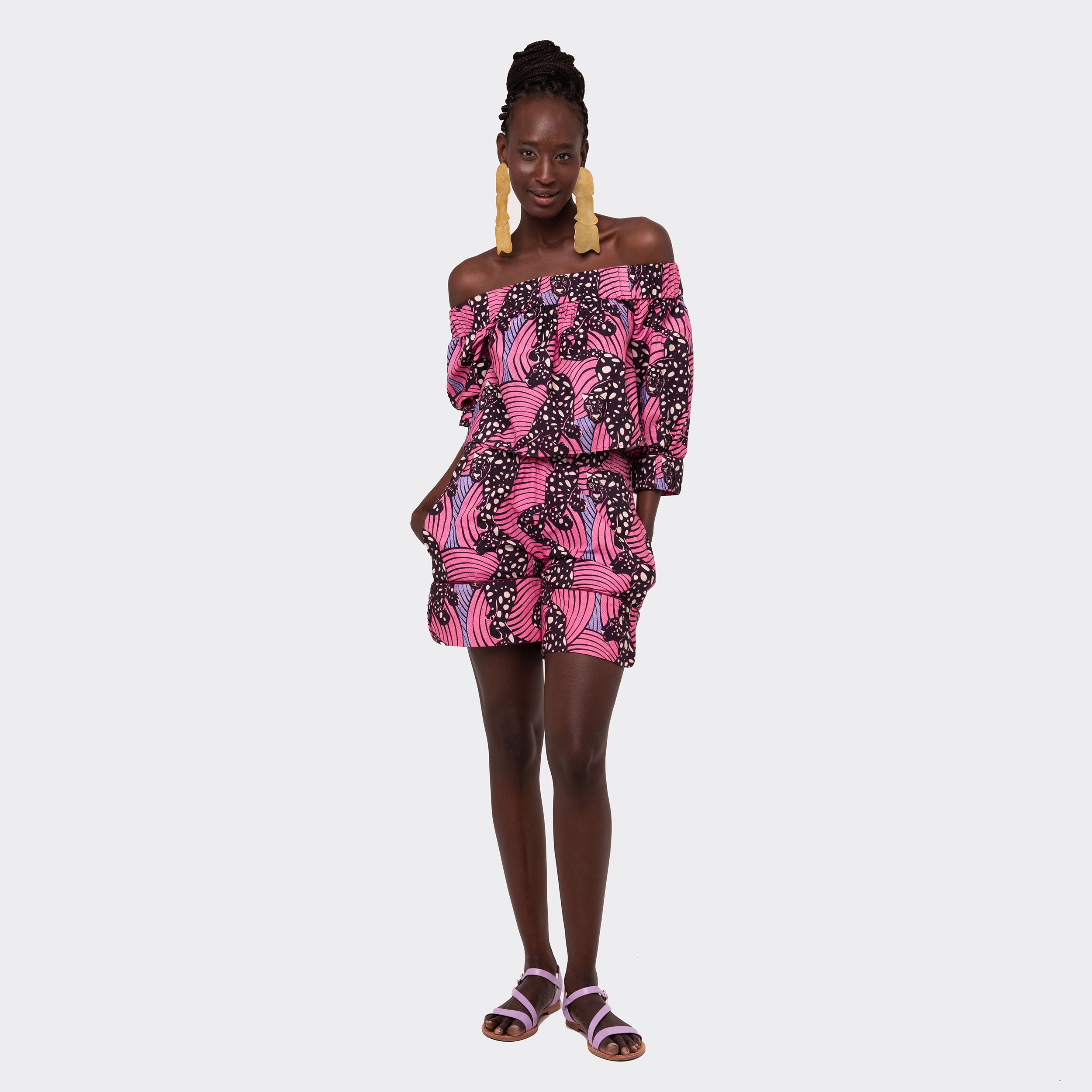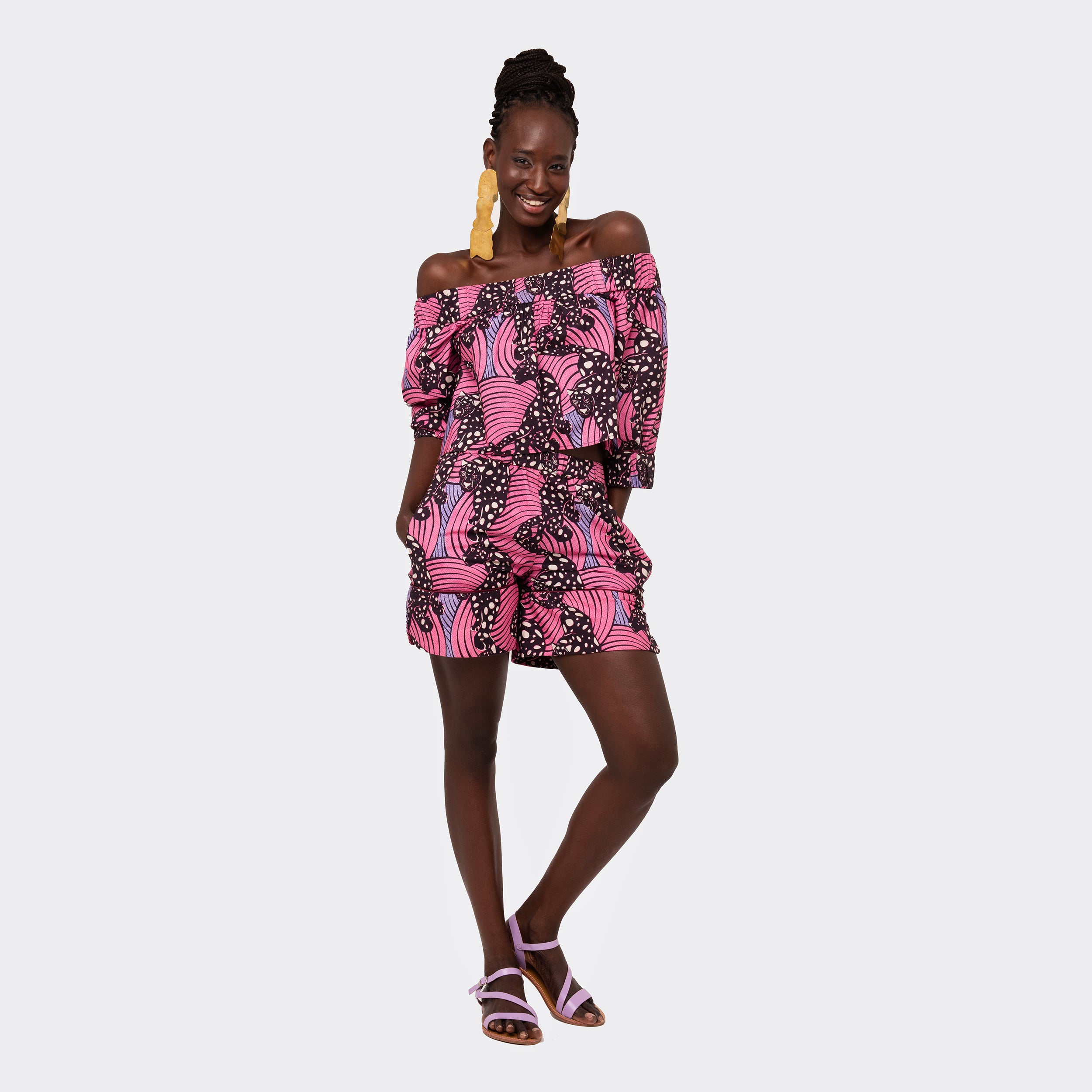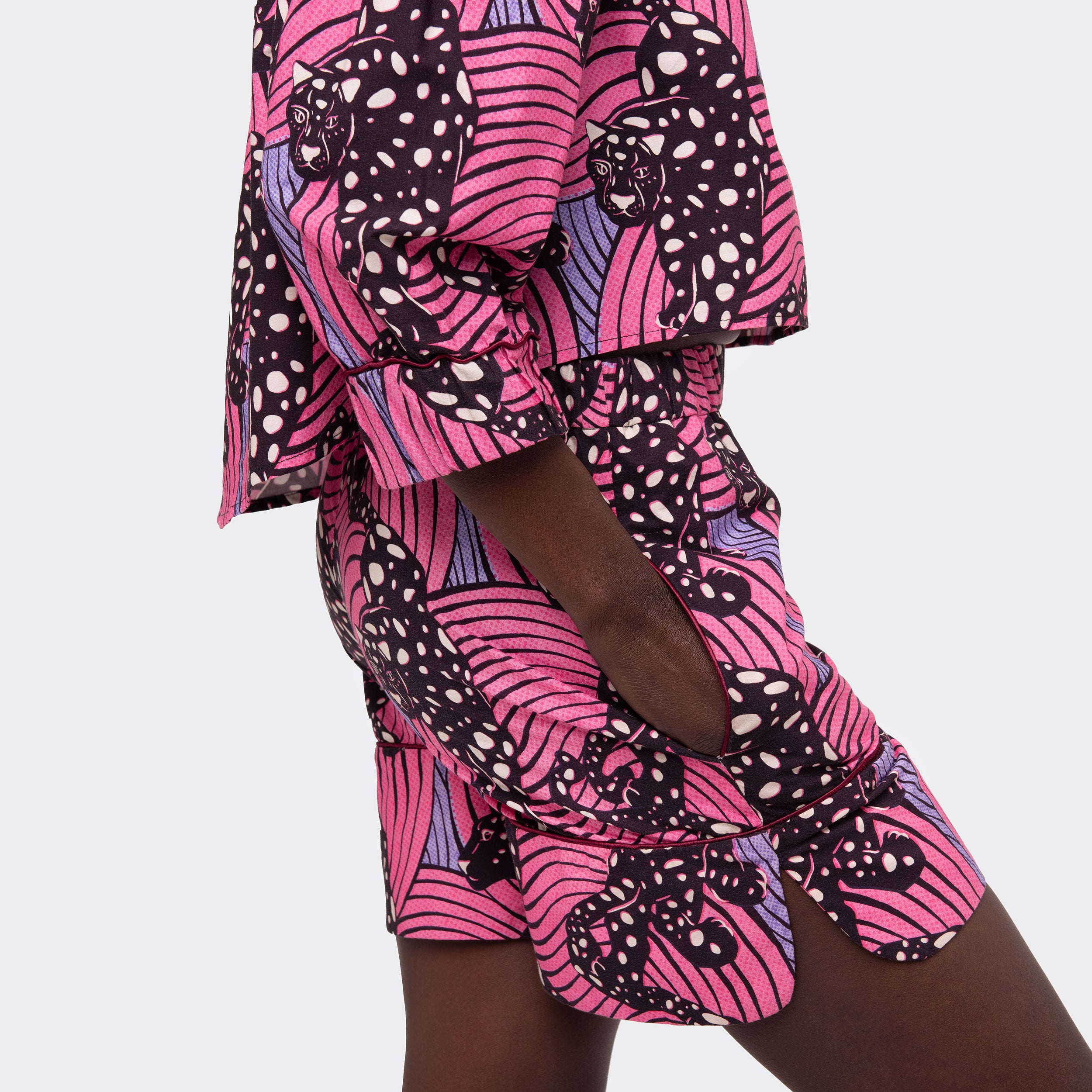
Most Endelea’s garments are made using wax fabrics.
We buy fabrics at small shops and markets in Dar es Salaam, after we have developed the design and right before the production starts.
The research is not easy, but just by walking among so many colors and bright patterns we feel excited and happy. We hope to spread the same joy to those who choose our clothes and accessories.
WAX: THE TRUE STORY
‘Wax’ is a term used to identify a category of brightly colored cotton fabrics, machine printed using wax resins. These kind of fabrics are so widespread in Africa to be called "African fabrics", even if their history is much more complex.
It all began in the nineteenth century in the Dutch East Indies, Indonesia, where locals used to color their fabrics by using the technique of wax-resist dyeing. When Europeans attempted to reproduce this technique by machine, in order to obtain low cost fabrics to sell, it led to the birth of an imperfect version of batik, with dots and spots where the wax cracked. Indonesians did not like it, but Western Africans did: they loved the fact that each fabric was different.
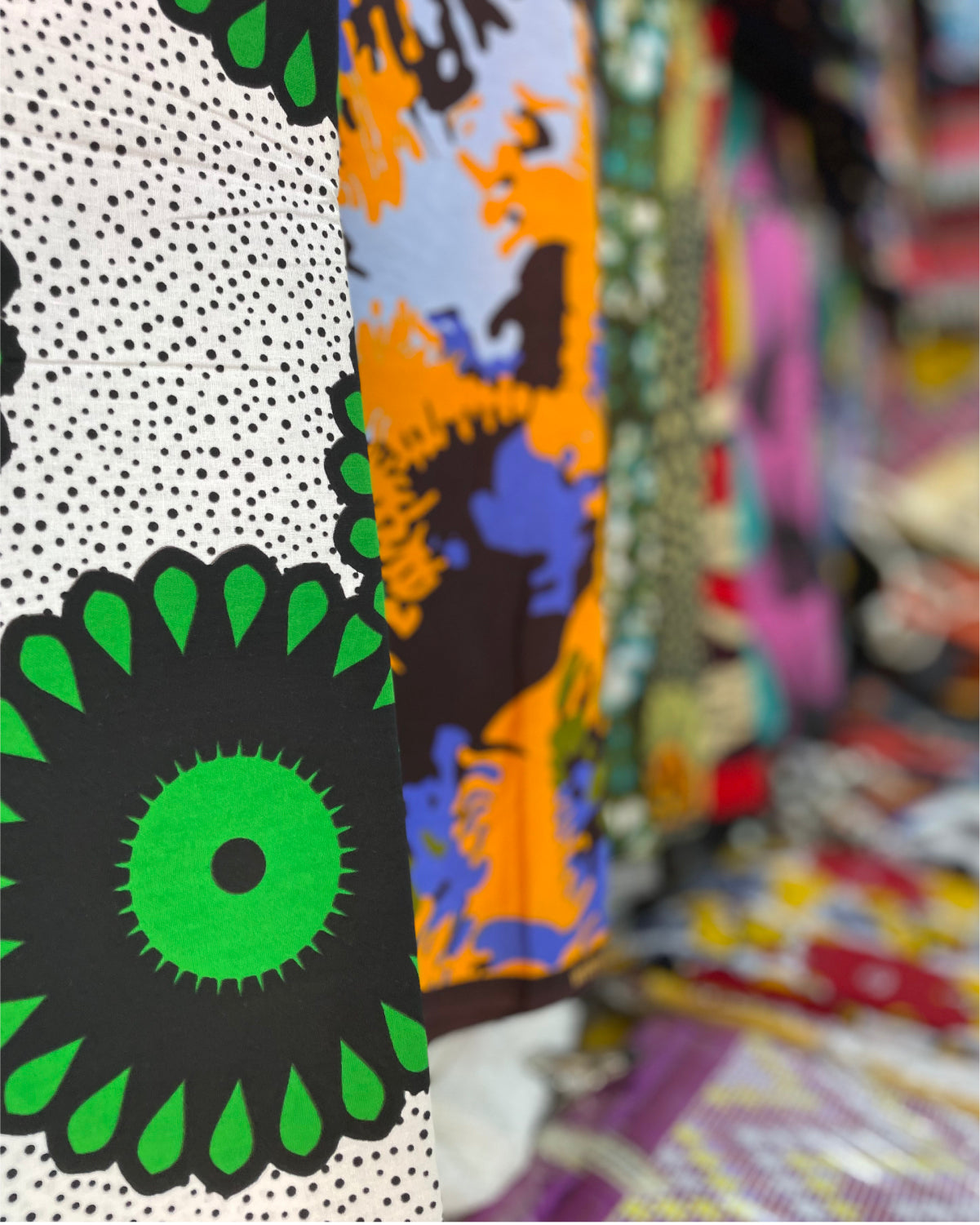
WAX: THE EVOLUTION
The unique style of West African women contributed to the evolution of prints towards brighter palettes and patterns linked to local proverbs and events. Wax became an open book: each design had a name, a meaning and a story – often invented by the seller – and therefore became a message to launch with one's own clothing. Today, every customer gives the print a meaning, linking it to politics, everyday life, dreams and hopes.
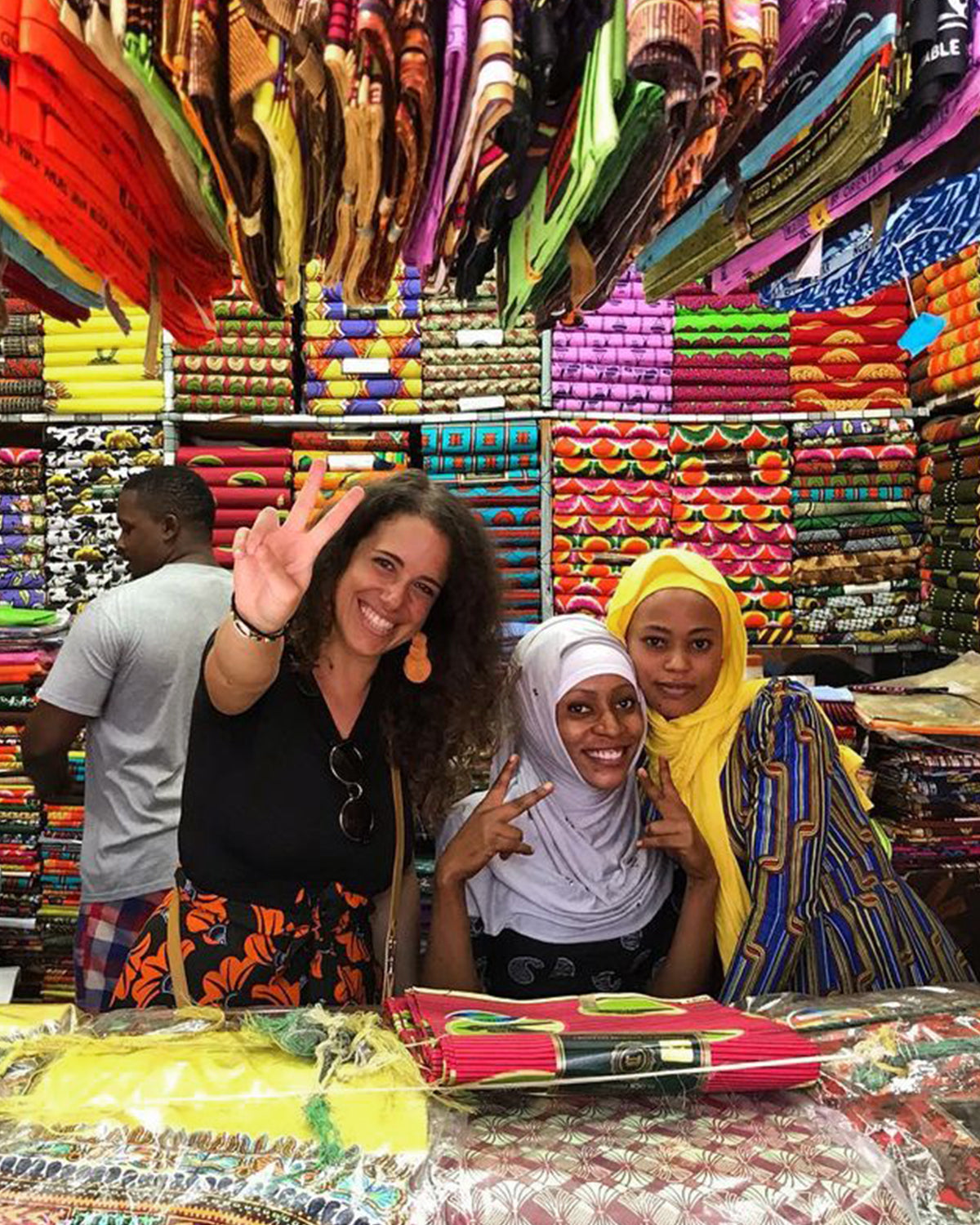
Wax fabrics, as the Anglo-Nigerian artist Yinka Shonibare states, have a very intricate cultural background: they are a symbol of African culture for those who think they were born in Africa, and the symbol of a hyperconnected, postcolonial material world, for those who understand the complexity of their origin.
WAX: LIMITED EDITION BY NATURE
Wax fabrics are ubiquitous in Africa. They travel from West to East and change rapidly over time: markets and small shops display hundreds of them, all with different prints and colors.
To support the local economy also through the purchase of raw materials, we only buy them from small retailers in Dar es Salaam. This means buying what is available at that time, which makes very difficult for us to re-stock an Endelea garment in the original fabric.
Each collection is therefore limited edition by nature because the fabrics we love are limited, so each piece is in its way unique.
Featured collection




